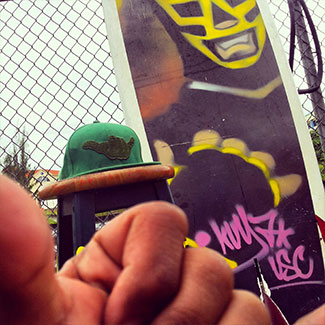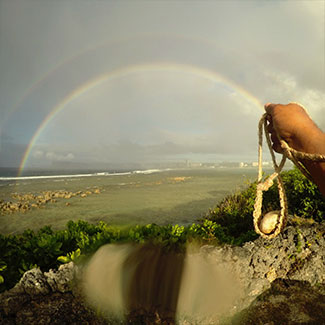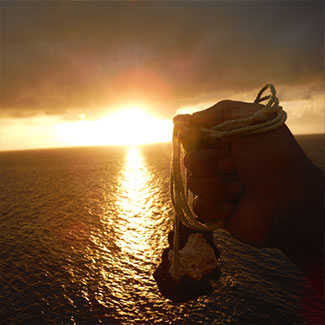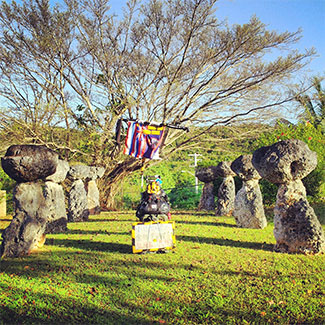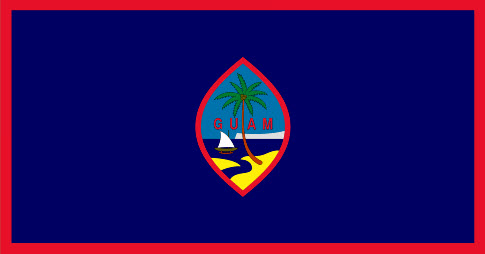sincerely,HappyThanksgiving
Hafa Adai,
We’d like to embrace the opportunity to say Thanks to all the support from our people over the years. Fokai has always been and always be a from-the-heart process in Celebrating Life and sharing in and aiming for the good vibe. It has always been our honor to see the love that passes through our doors–its a love that we extend in our product and development.
Respect+Strength&Honor=CallOfDuty.
Proud to Rise and Fall and Rise again with you.
ForLife–HappyThanksgiving
IndependenceDay,Moscow,&10.08.09
November 24, 2010 by admin
Filed under 1008, Special Forces
GoodVibrations:Give!
November 7, 2010 by admin
Filed under 1008, Special Forces
http://www.cnn.com/video/#/video/living/2010/11/04/can.lotto.winner.donates.all.cbc?hpt=T2
How God spends 11MillionDollars
Exhaust.Proceed.Culitvate:Body.Mind.Spirit.
November 2, 2010 by admin
Filed under 1008, Special Forces
12YearOldYoga Champion. It’s amazing what the human body is capable of when motivated. Exactamundo–BRUH!
Voice:WeAreGuahan
October 21, 2010 by admin
Filed under 1008, Special Forces
http://www.gopetition.com/petitions/preserve-and-protect-pagat.html
GoodVibrations:CNN.com
October 11, 2010 by admin
Filed under 1008, Special Forces
Editor’s note: TED is a nonprofit organization devoted to “Ideas worth spreading,” which it makes available through talks posted on its website. Julian Treasure, the author of “Sound Business,” is chairman of UK-based audio branding specialist The Sound Agency and an international speaker on sound’s effects on people, on business and on society.
(CNN) — Most of us have become so used to suppressing noise that we don’t think much about what we’re hearing, or about how we listen. Yet our well-being is now being seriously damaged by modern sound. Here are 10 things about sound and health that you may not know:
1.) You are a chord. This is obvious from physics, though it’s admittedly somewhat metaphorical to call the combined rhythms and vibrations within a human being a chord, which we usually understand to be an aesthetically pleasant audible collection of tones. But “the fundamental characteristic of nature is periodic functioning in frequency, or musical pitch,” according to C.T. Eagle. Matter is vibrating energy; therefore, we are a collection of vibrations of many kinds, which can be considered a chord.
2.) One definition of health may be that that chord is in complete harmony. The World Health Organization defines health as “a state of complete physical, mental, and social well-being and not merely the absence of disease or infirmity” which opens at least three dimensions to the concept. On a philosophical level, Plato, Socrates, Pythagoras and Confucius all wrote at length about the relationship between harmony, music and health (both social and physical). Here’s Socrates: “Rhythm and harmony find their way into the inward places of the soul, on which they mightily fasten, imparting grace, and making the soul of him who is rightly educated graceful, or of him who is ill-educated ungraceful.”
Watch an interview with Julian Treasure
3.) We see one octave; we hear ten. An octave is a doubling in frequency. The visual spectrum in frequency terms is 400-790 THz, so it’s just under one octave. Humans with great hearing can hear from 20 Hz to 20 KHz, which is ten octaves.
4.) We adopt listening positions. Listening positions are a useful set of perspectives that can help people to be more conscious and effective in communication — because expert listening can be just as powerful as speaking. For example, men typically adopt a reductive listening position, listening for something, often a point or solution.
Women, by contrast, typically adopt an expansive listening position, enjoying the journey, going with the flow. When unconscious, this mismatch causes a lot of arguments.
Other listening positions include judgmental (or critical), active (or reflective), passive (or meditative) and so on. Some are well known and widely used; for example, active listening is trained into many therapists, counselors and educators.
5.) Noise harms and even kills. There is now wealth of evidence about the harmful effect of noise, and yet most people still consider noise a local matter, not the major global issue it has become.
According to a 1999 U.S. Census report, Americans named noise as the number one problem in neighborhoods. Of the households surveyed, 11.3 percent stated that street or traffic noise was bothersome, and 4.4 percent said it was so bad that they wanted to move. More Americans are bothered by noise than by crime, odors and other problems listed under “other bothersome conditions.”
TED.com: Music is medicine, music is sanity
The European Union says: “Around 20% of the Union’s population or close on 80 million people suffer from noise levels that scientists and health experts consider to be unacceptable, where most people become annoyed, where sleep is disturbed and where adverse health effects are to be feared. An additional 170 million citizens are living in so-called ‘grey areas’ where the noise levels are such to cause serious annoyance during the daytime.”
The World Health Organization says: “Traffic noise alone is harming the health of almost every third person in the WHO European Region. One in five Europeans is regularly exposed to sound levels at night that could significantly damage health.”
The WHO is also the source for the startling statistic about noise killing 200,000 people a year. Its findings (LARES report) estimate that 3 percent of deaths from ischemic heart disease result from long-term exposure to noise. With 7 million deaths a year globally, that means 210,000 people are dying of noise every year.
TED.com: Jose Abreu on kids transformed by music
The cost of noise to society is astronomical. The EU again: “Present economic estimates of the annual damage in the EU due to environmental noise range from EUR 13 billion to 38 billion. Elements that contribute are a reduction of housing prices, medical costs, reduced possibilities of land use and cost of lost labour days.” (Future Noise Policy European Commission Green Paper 1996).
Then there is the effect of noise on social behavior. The U.S. report “Noise and its effects” (Administrative Conference of the United States, Alice Suter, 1991) says: “Even moderate noise levels can increase anxiety, decrease the incidence of helping behavior, and increase the risk of hostile behavior in experimental subjects. These effects may, to some extent, help explain the “dehumanization” of today’s urban environment.”
Perhaps Confucius and Socrates have a point.
6.) Schizophonia is unhealthy. “Schizophonia” describes a state where what you hear and what you see are unrelated. The word was coined by the great Canadian audiologist Murray Schafer and was intended to communicate unhealthiness. Schafer explains: “I coined the term schizophonia intending it to be a nervous word. Related to schizophrenia, I wanted it to convey the same sense of aberration and drama.”
My assertion that continual schizophonia is unhealthy is a hypothesis that science could and should test, both at personal and also a social level. You have only to consider the bizarre jollity of train carriages now — full of lively conversation but none of it with anyone else in the carriage — to entertain the possibility that this is somehow unnatural. Old-style silence at least had the virtue of being an honest lack of connection with those around us. Now we ignore our neighbors, merrily discussing intimate details of our lives as if the people around us simply don’t exist. Surely this is not a positive social phenomenon.
7. Compressed music makes you tired. However clever the technology and the psychoacoustic algorithms applied, there are many issues with data compression of music, as discussed in this excellent article by Robert Harley back in 1991. My assertion that listening to highly compressed music makes people tired and irritable is based on personal and anecdotal experience – again it’s one that I hope will be tested by researchers.
8. Headphone abuse is creating deaf kids. Over 19 percent of American 12 to 19 years old exhibited some hearing loss in 2005-2006, an increase of almost 5 percent since 1988-94 (according to a study in the Journal of the American Medical Association by Josef Shargorodsky et al, reported with comments from the researchers here). One university study found that 61 percent of freshmen showed hearing loss (Leeds 2001).
Many audiologists use the rule of thumb that your headphones are too loud if you can’t hear someone talking loudly to you. For example, Robert Fifer, an associate professor of audiology and speech pathology at the University of Miami Leonard M. Miller School of Medicine, says: “If you can still hear what people are saying around you, you are at a safe level. If the volume is turned so loudly that you can no longer hear conversation around you, or if someone has to shout at you at a distance of about 2 or 3 feet to get your attention, then you are up in the hazardous noise range.”
TED.com: Evelyn Glennie shows how to listen
9. Natural sound and silence are good for you. These assertions seem to be uncontroversial. Perhaps they resonate with everyone’s experience or instinct.
10. Sound can heal. Both music therapy and sound therapy can be categorized as “sound healing.” Music therapy (the use of music to improve health) is a well-established form of treatment in the context of mainstream medicine for many conditions, including dementia and autism.
Less mainstream, though intellectually no more difficult to accept, is sound therapy: the use of tones or sounds to improve health through entrainment (affecting one oscillator with a stronger one). This is long-established: shamanic and community chant and the use of various resonators like bells and gongs, date back thousands of years and are still in use in many cultures around the world.
Just because something is pre-Enlightenment and not done in hospitals doesn’t mean that it’s new-age BS. Doubtless there are charlatans offering snake oil (as in many fields), but I suspect there is also much to learn, and just as herbal medicine gave rise to many of the drugs we use today, I suspect there are rich resources and fascinating insights to be gleaned when science starts to unpack the traditions of sound healing.
I hope these thoughts make a contribution to raising awareness of sound and its effects on health. I welcome your reaction, and I will check this forum and respond.
The opinions expressed in this commentary are solely those of Julian Treasure.
1008:InReflection
October 9, 2010 by admin
Filed under 1008, Special Forces
Since about 1998,Every October 8th has been a very special day for Fokai.
10/08 has since revealed valuable lessons attained in reflection of the events that transpire within that window of conscious inspiration. Originally waiting for messages from above, we often find that messages can also come from inside. the aideal allignment comes when the inside is in tune with the above. from this comes peace.
2010 has brought to the front the appreciation of life, the appreciation of love, the appreciation on the love of life, and the appreciation of the life of love.
A DAY IN THE LIGHT
Hopefully moments in the darkness will help us to appreciate the light but we have to understand that light comes in all different colors to weave its way through the nooks and crannies to bring us a better understanding.
When we reflect on how valuable life can be,w e realize how important it is to welcome and embrace new life as an potential archive of immortal glory.
And realize that the light we leave behind us eventually brightnes the trails in front of us. Everyone has moments of weakness and no man is an island.
What is the Meaning of Life?
Finding happiness in making others happy.
All Day–CelebrateLife
What is 1008?
October 8, 2010 by admin
Filed under 1008, Special Forces
In observation of 10/08–Fokai offers you a blast from the past
This has been a question asked over the years regarding Fokai and our association to 1008. Honestly, the number has ben with us sinceeversince and weve always viewed it as a Guardian Angel to the company. Applying it on design and promotions has been our intention to extend this higher blessing to our support. As the years go by, we are discovering information on the number that reminds us that 1008 is a street sign on a healthy path to higher living
http://www.magicofgayatri.com/pages/power-of-mantras.html
GoodVibrations to all. efforts sincere to deliver you the best in purpose and product.
FOR EXAMPLE:
GoodVibrations:Stranger
September 10, 2010 by admin
Filed under 1008, MetallicSunsets
<a href=’http://banners.thestranger.com/ads/adclick.php?n=a7215bae’ target=’_blank’><img src=’http://banners.thestranger.com/ads/adview.php?what=zone:209&n=a7215bae’ border=’0′ alt=”></a>
Friday, September 3, 2010
Love Guam and Back
Posted by Trent Moorman on Fri, Sep 3, 2010 at 12:41 PM

- J.McFerran
The hermit crabs on the south end of Guam have the deal down. Toward Cetti and Umatac Bay, claws go unclenched crawling through secluded days on seldom touched, unspoiled beaches, or ranches as they say. Few are the humans there. Air breathed in adds days to your life. Thick air. Jungle air. Crustacean air. Sand is sugar, pulling at ankles. It may rain, but it’s welcome. It may thunder, but it combs the distant sky past the green hills of Fort Soledad. Ocean is clear and warm. Coral mazes run forever. Blue starfish, flying fish, possible octopi. The quickness of the barracuda seems out of place. Time seems out of place, washing through like the daily storm. You’re a hermit crab, you’re house is attached to your back. Your antennae spin the earth. What matters? Elsewhere out there, calculus exams are taken. Traffic clogs highways. People argue. There’s war. The planet clocks in. Blood pressure spikes. But not here. Time doesn’t really happen on Guam. It’s somewhere else. Magellan won’t land here until March 6th, 1521, so you’re good, you got millennia. And your shell. Come out. Be. Bask. Elongate. Move, or don’t. Sun is. Sun is all.
Guam lies in the Pacific, south of Tokyo, and north of Australia. It’s thirteen degrees above the equator, thirty miles long by nine miles wide. It’s the southernmost island of the Marianas chain and the largest in Micronesia. Buildings and houses are made to withstand Typhoons. In 2002, Typhoon Pongsona had 173 mph winds, with only one fatality. The indigenous Chamorros and the people of Guam are nobles of and for the sea. Women, goddesses and mermaids. Everyone is warm and open. Hafa Adai is hello, the Latte Stone, the symbol of the island. Maliciousness does not compute.
Guam craves music. They have a lively scene, mostly reggae and cover bands. Hip hop has yet to arrive. There are hip hop DJ’s and MC’s, yes, such as Aaron Tamayo at Hit Radio 100 KOKU, and heads, like the family at Fokai Clothing. But the music and radio mainly resemble Top 40. Promoter Delia Lujan is trying to change that. She started a pioneering promotions company called Quasicool, and has begun to bring music and bands to Guam. Her first was Meiko, who collaborated with Crystal Method last year.
Head Like a Kite was Lujan’s second go-round. A lawyer by trade, she’s a promotions machine, treating us like kings, and doing everything rightly, garnering sponsors, news, radio, signage, and TV spots (CW4 and Guam News Watch). She also hosts a show called Folk Waves on KPRG Public Radio for Guam. She gave us a car, phones, and went way out of her way to make us feel welcome. To her and her friends I have endless gratitude and thanks. Because Guam is so far, it’s hard to get bands and indie type music there. But that’s exactly what Lujan’s plan is. The next act she’s prepping to bring Guam’s way is her biggest yet (announcement is pending). Manila, Philippines is an area close enough for bands to hit as well, so growth and the future of music expansion in Guam look promising. Our shows were good, there were two. One was all ages. People hesitant at first, were up close and jumping by the end.
(Pictures after Jump.)
The week there was a blur and I didn’t want to leave. People like J. McFerran – the Mayor of Mermaid Tavern, paddle-board guiding Chamorro Pedro talkers, Brogan.biz, Leslie and the Buffy watching party, Jackie the blackbelt, Jayton all ages man, Steve, Matt, Tish, and Tano, I had to force myself on the plane. The food, the drink, the beaches frikking everywhere, make you want to stay. Ribs galore and chicken with finadene, a soy, vinegar, lemon sauce, and Sweet Tuba, a drink made from the first sap of a young coconut tree. Tuba may be the liquid consumption experience of my life. Watch out for duendes, the mischievous goblin spirits, they’ll trip you up. And Betsy, the Carabao, ring through her nose, up for a pat.
Crossing the international dateline to get to Guam puts a twist in the jetlag. Our second night there, we were guests at a fundraiser for the Lt. Governor. He had mean, svelte Power Slide moves on the dance floor. The dude needs to be on Soul Train. I believe I met the Governor as well. I was full of Bud Light and accidentally coughed a fleck from a meat skewer on his lapel. He was forgiving. It was tiny and bulbous and wiped away instantly. Sorry Delia, it just flew right out.
Speaking of American moves, Guam is set to undergo a large US troop build up. Some 30,000 soldiers and family will be heading there. (Unrest in North Korea?) In classic American fashion, they’re trying to build a firing range on sacred Chamorro land. DEAR WHATEVER GENERAL OR OFFICIAL PUT THIS IN THE PLANNING, Not a good idea. Not such a great way to implement the build up. You think? Hello, it’s sacred land. Find another place for your target practice. You’ve already taken the nicest beaches in your third of the island, and all the barbed wire around the US compounds (to keep the locals out) isn’t the best look. Duendes will have a field day with your toiletries if this happens. As will the Taotaomona ghosts of the ancients. The troops might want to try the Chamorro saying Guella yan Guello, “Excuse us, elders. May we walk through and visit your land?” And while your at it, tell your boys to get out of the Inarajan pools, turn down their shitty music, and pick up their fucking beer cans. Tell them to ogle each other for a change.
Another Guam discovery was Japanese soldier, Yokoi. A hold out from the WWII hostilities in 1945. When American forces liberated the island in the 1944 Battle of Guam, Yokoi went into hiding. Due to shame for not killing himself because he was still alive, he stayed in hiding for twenty-eight years. I don’t know why his cave made such an impression. Twenty-eight years, in a cave. With an airshaft. Harnessing river food, making shoes, and a cooker. He was a full on Pre-Macgyver, coming out in 1972 to be hailed as a hero in Guam as well as Japan.
Another hero, Asya from Smoosh, was there to guest with us. Hearing her sing Tilson’s parts was a highlight. Asya’s got the mermaid thing going on as well. Duendes are definitely not messing with her.
In other Guam news, they do more than massage in massage parlors. And there’s a guy who murdered his wife who somehow has been doing work release outside prison after serving only three years of full incarceration. He continually fights for parole, and his daughter, who was five at the time of her mother’s murder, continually and traumatically has to go in front of the parole board and tell them to put her father back in prison. She says, “I’m serving a life sentence without my mother because of his selfishness. He should have to do the same.”
Back to the beauty, the last day there, I was graciously taken out on a boat to the South end of the island for snorkeling. Rain washed in then out. Looking at rain hit the surface of the ocean from underneath is a muted sound. Drops as little fingers push the boundary back from the edge of the world. Then it was undulated suspension in the swaying algae on the coral, and the clicking sound of Parrotfish chipping away at the coral. Next thing I knew, I was on a plane, then was sprinting through the airport in Honolulu to make the connection home. Duendes jacked my wallet at the metal detector and I had to run back for retrieval. I bet Asya didn’t have any duende wallet problems at the metal detector.
Goodbye for now, island in the Pacific. Flying fish and the fly Chamorros. I love you, Guam.

- Fort Soledad.

- View from Hotel Room in Nikko.

- Nozzle Will Retract Automatically.


- Elvis House. The Owner Surely Does Have it Going On.

- Elvis House Close Up. Really Really Has it Going On.

- Drawing of Ancient Latte Stones in Use.

- Delia Doing Her Radio Show.

- Inhale.

- Duende?

- Barista Cafe. Notice Proximity to Beach.

- Tano, in Fokai. Large and Large.

- Fried Rice with Chamorro Sausage & Egg on Top. Get at it.

- Hot Spot.

- Ranch on South End. All About the Hermit Crabs.
Revamp:EnsonInoue,108Temples&870Miles
August 31, 2010 by admin
Filed under 1008, CelebrityFokai, FokaiCombatUNit, FokaiHawaii, FokaiJapan, Special Forces
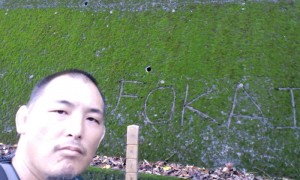 Sometimes getting totally lost is the best way to find yourself and sometimes going into seclusion is the best way to discover that youre really not alone.
Sometimes getting totally lost is the best way to find yourself and sometimes going into seclusion is the best way to discover that youre really not alone.
In a solo journey on foot of 870miles in , In about his 200th mile, Enson was gracious enough to drop a line after yesterday. He’s doing great.Having a powerful experience. 14days of hiking 14hours a day.sleeping outdoors and eating fruit of f trees. About a month to go.
but exhausting,proceeding, and cultivating most definitely. Hes praying for us all. And hoping we can do the same for him.




